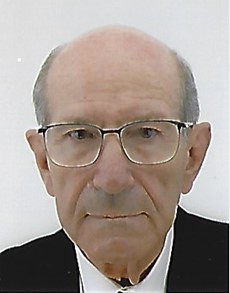SKIET’s first plant in Poland has completed after about 21 months of construction. It is expected to kick off commercial operation in the fourth quarter of this year, after mechanical completion in June and test operation that started in August. It makes SKIET the first company ever to gain a production foothold for lithium-ion battery… Continue reading SK IE Technology fully operates a lithium-ion battery separator plant in Poland
Tag: Mobility
Apple CarPlay could control more parts of your vehicle in the future
Ever since it was introduced in 2015, Apple CarPlay has represented a notable upgrade over the user interfaces most cars have by default, but many of our concerns about it, and Android Auto, come up due to their limitations. Newer features like dual-screen support and third-party apps like Google Maps could help, but there are… Continue reading Apple CarPlay could control more parts of your vehicle in the future
FinTech Auto1 FT launches Europe’s first car financing on blockchain
– Smart contracts on Ethereum replace paper and manual procedures – Mobility industry benefits from faster, more efficient and safer processing and documentation of vehicle financing – Significant step taken towards complete digital mapping of vehicles BERLIN, Oct. 7, 2021 /PRNewswire/ — Auto1 FT, the leading financial partner of the automotive industry, is eliminating all manual… Continue reading FinTech Auto1 FT launches Europe’s first car financing on blockchain
@BMW: BMW Group posts significant sales growth through September. Group’s electro-offensive consistently driven forward, sales of fully-electric vehicles more than doubled001510
With a total of 1,932,236 vehicles sold through September, BMW Group sales climbed +17.9% year-on-year Deliveries of fully-electric vehicles more than doubled since start of the year (59,688 vehicles, +121.4%) Strong competitive position expanded in key markets worldwide Pieter Nota: “Confident we can meet our ambitious sales targets despite semiconductor shortage and achieve solid, profitable… Continue reading @BMW: BMW Group posts significant sales growth through September. Group’s electro-offensive consistently driven forward, sales of fully-electric vehicles more than doubled001510
Hyundai Mobis invests $1.1 billion for 2 new hydrogen fuel cell system plants in Korea
Hyundai Mobis announced to invest a total of USD 1.1 billion (KRW 1.3 trillion) into the two plants. The new plants will start mass production in the second half of 2023. When fully operational, the facilities are expected to produce 100,000 hydrogen fuel cells every year. Hyundai Mobis, with the largest fuel cell production capacity… Continue reading Hyundai Mobis invests $1.1 billion for 2 new hydrogen fuel cell system plants in Korea
Ola Källenius Interview: The Mercedes Chief Talks Electric Cars – Highsnobiety
Two weeks ago at the IAA Mobility show in Munich, Mercedes revealed the future to the world, putting its peers on notice and telling them to catch up. To date, most electric-only startups such as Tesla, Rivian, or Lucid have revolved around a single product. And most traditional automakers have either introduced novelty “future-mobiles,” or… Continue reading Ola Källenius Interview: The Mercedes Chief Talks Electric Cars – Highsnobiety
@Honda: Cooperation Between Honda and Red Bull Group As From 2022
The Honda Foundation, the public interest incorporated foundation established by Soichiro Honda and his younger brother Benjiro and currently led by President Hiroto Ishida, is pleased to announce that the Honda Prize 2021 will be awarded to Dr. Alim Louis Benabid, Professor Emeritus of Joseph Fourier University and Chairman of the Board of Clinatec*1, for… Continue reading @Honda: Cooperation Between Honda and Red Bull Group As From 2022
@Hyundai: Creating New Mobility with AI – AIRS Company
Play What will the future mobility industry look like with AI technology? AIRS Company, an AI specialized organization created for automobile AI research and mobility & life services. Creating new mobility through AI technology. Providing new mobility experience and better services by applying AI technology to the entire mobility industry. We Drive AI, AIRS Company… Continue reading @Hyundai: Creating New Mobility with AI – AIRS Company
Amco Polymers Launches New Mobility Initiative
Amco Polymers has launched a redesigned Mobility Focused Business Strategy. Tweet this The mobility focus includes the additions of industry veterans Bruce Serafin and Robert Nelson, who bring over 50 years of combined industry experience. “We are excited for our expansion into the mobility segment. AMCO’s UL expertise, strong technical DNA, and best-in-class service model… Continue reading Amco Polymers Launches New Mobility Initiative
GM Details Plan to Double its Revenue, Drive Even Higher Margins
WARREN, Mich., Oct. 6, 2021 /PRNewswire/ — Unlocking growth in EVs through the Ultium hardware platform and leadership in software and services through the Ultifi platform Planning to double annual revenues and expand EBIT-adjusted margins to 12 to 14 percent Leading the race to commercialize AVs Launching new businesses to add customers and diversify revenues Increasing… Continue reading GM Details Plan to Double its Revenue, Drive Even Higher Margins

